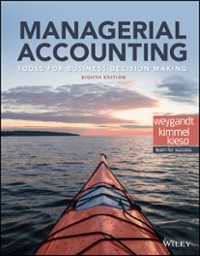(c) On 1 October 20X0 the government awarded Pharma a ten-year licence to make a cancer- treatment drug. The licence was recognised on that date at its fair value of $9.8 million. As a result of the award of the licence, Pharma purchased a division of a competitor making similar products in 20x1 and merged it with its own activities, within its Specialist Drug sub-division, which is a separate cash-generating unit. Goodwill of $12 million was recognised on the purchase. By 20X6I20X7 the part of the Specialist Drug division producing the cancer drug amounted to about 5% of the revenues of the Group. 0n 1 May 20x7, the government revoked the licence on the grounds that Pharma had failed to meet some of the criteria of the licence. At the date of the decision, the net book value of the combined assets of the Specialist Drug division was $942 million (including the goodwill on the purchase of the competitor's business). No impairment losses had previously been recognised. As a result of this Pharma decided to sell the associated assets or redeploy them elsewhere within the Specialist Drug division. As part of an impairment test conducted after the decision fair value less costs to sell of the Specialist Drug division was estimated at $804 million. Revised estimated net cash inows for the Specialist Drug division at the end of each of the next ve years (taking into account sale or redeployment of the assets making the cancer drug) were estimated at $112 million for years 13, $130 million for year 4 and $1,014 million for year 5 assuming the disposal of the division after ve years. An appropriate discount factor is 12%. Employees of the division were notied of the decision on 1 June and redundancy notices for those who could not be redeployed elsewhere were issued on that date. The estimated amount of redundancy payment was $400,000 which had not been paid by the year end as the division had not been shut down by that date. (10 marks) (d) Following higher than planned employee departures in 20X5l20X6, Pharma initiated a group- wide share-based payment scheme for employees in July 20x7, whereby employees would receive as a cash benet, the increase in the share price from 1 July 20X? to 1 July 20Y0, provided they remained in Pharma's employment throughout the period. The scheme was taken up by approximately 10,000 employees and 1,050,000 rights (in total) were granted. It was estimated at 1 July 20x7, that the fair value of this benet was approximately $2 per right and $2.10 at 30 September 20x7. Due to the effect of adverse circumstances on Pharma's share price, this has now fallen to about $1.50. Management estimated that 70% of the rights would be exercisable on 1 July 20Y0 due to expected employee departures. (3 marks) (e) During the period Pharma set up a joint (50:50) arrangement with a competitor to market and distribute certain over the counter products in the EU market. The joint arrangement is set up as a separate company which will pay dividends to the investors. Pharma transferred a portfolio of distribution assets and a signicant amount of cash to the entity as part of the set-up arrangement. The investors do not have direct rights to or ownership of the assets of the joint arrangement once contributed unless the entity is wound up, when the proceeds from the sale of the assets less liabilities would be distributed 50:50. No guarantees were entered into for the liabilities of the joint arrangement. The joint arrangement has been loss making so far, mainly due to set-up costs and has paid no dividends, but is expected to be protable in the future







